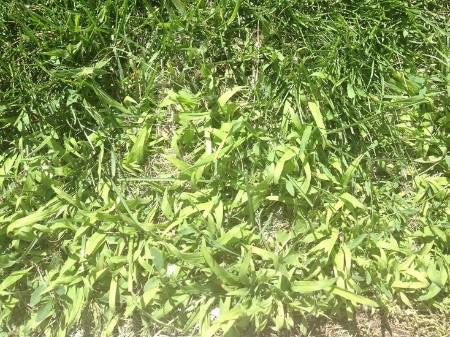Crabgrass

Crabgrass is among the most significant weed issues many homeowners face in their lawns. While many people have heard of crabgrass, they may not know what it is and the best way to control it. Crabgrass is an annual grassy weed that can crowd out more desirable and aesthetically pleasing grasses. This weed typically grows in ungainly clumps with a rolled stem and lime-green coarse-textured leaves. It typically has a prostrate growth form and spreads out along the ground. You can see the difference in the grasses to the right. The crabgrass is on the bottom.
The best way to prevent crabgrass and any weed is to have a healthy, thick stand of turfgrass that can out-compete the less desirable plants. Fertilizing the lawn at the correct time, watering when necessary, and mowing at the correct height with a sharp blade will reduce the number of weeds you have. If you have crabgrass, the best way to control it is to apply a pre-emergent herbicide that prevents it from germinating.
The timing of the application is very important. If applied too early, the pre-emergent could run out of efficacy before the crabgrass stops germinating later in the season; if applied too late, the pre-emergent does not affect the already germinated crabgrass. The ideal time to apply crabgrass preventer is when the redbud trees are in full bloom, typically about April 15th, giving the chemical time to disperse into the ground. Most pre-emergent herbicides will need a second application after they have worn off unless you buy a product such as Barricade or Dimension that provides season-long control. Since crabgrass seeds are viable in the soil for several years, this can be a long-term fight, but you can eventually win the battle.

Have questions? Contact our office where our Horticulture Extension Agent will assist you with questions.
Phone: (316) 321-9660
Email: callae@ksu.edu